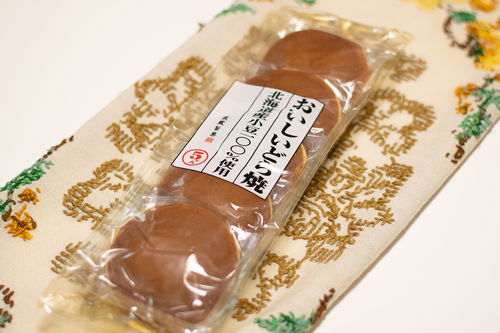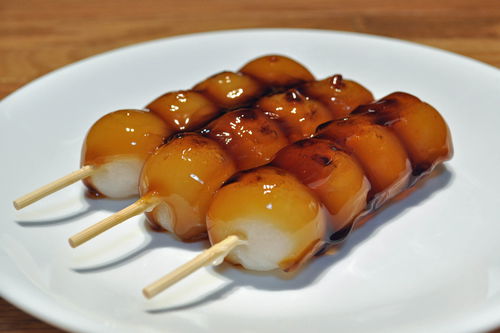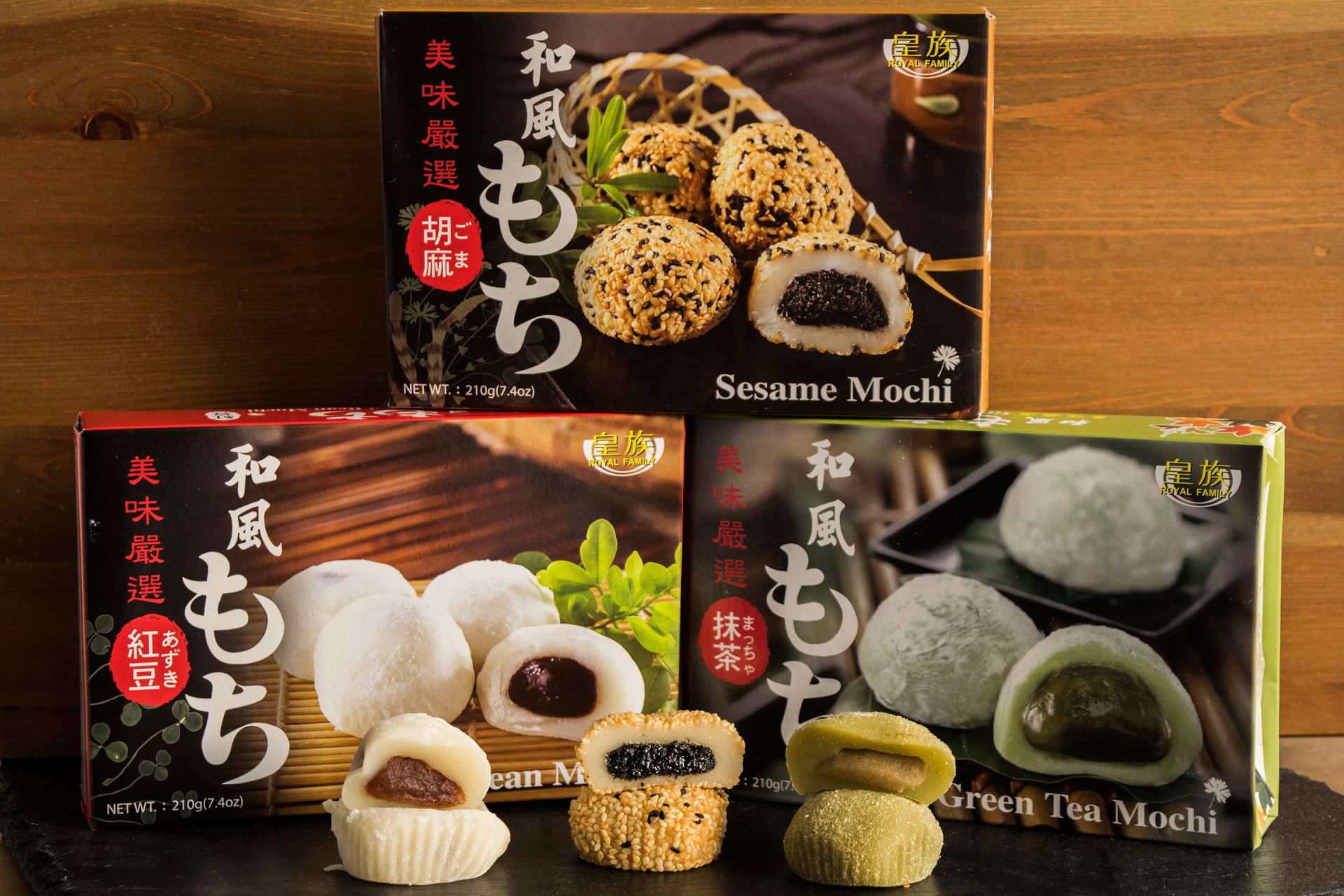Table of contents:
Japanese sweets are gaining popularity even in Europe. They are fundamentally different from German sweets. They surpass German sweets not only in beautiful packaging but also in their abundance, as there are up to 15 versions of some sweets.
Wagashi - 和菓子
Wagashi (和菓子) are traditional Japanese sweets often served with tea. They have been made in Japan for centuries and have a long history and cultural significance. Wagashi are known for their variety of shapes, colors, and textures and are often made from natural ingredients such as rice, bean paste, and sugar. The creation of Wagashi requires a lot of handwork and traditional techniques to achieve the characteristic look and taste. Wagashi are often served on special occasions such as festivals and ceremonies and are an important part of Japanese culture. Today, there are also modern variations of Wagashi with Western influences that reinterpret traditional Japanese sweets in a contemporary context.
Senbei 煎餅 - Japanese Crackers
Senbei are crispy, flat crackers made from rice flour, very popular in Japan. They are available in various flavors, such as soy sauce, teriyaki, sweet or classic salty. But what sets Senbei apart from other crackers is the variety of designs and patterns that can be embossed on the surface. These range from simple geometric shapes to complex images of animals or landscapes. Senbei are not only tasty snacks but also part of Japanese art and culture.

Daifuku - 大福
If you are looking for a unique dessert, you should definitely try Daifuku. It consists of a soft rice cake shell and a sweet filling and is a popular Japanese dessert. The shell is made from mochi dough, which is made from rice flour and sugar. The filling can consist of various ingredients, such as red bean paste, chocolate, or fruit (strawberries are especially popular). Daifuku is widespread in Japan and is often sold as a gift (Omiyage) in specialty stores or online shops.

Dorayaki - どら焼き
Dorayaki - どら焼き - is a traditional Japanese dessert consisting of two fluffy pancakes held together by a filling of sweet red bean paste. Dorayaki is very popular throughout Japan and is often served as a snack or dessert. They pair perfectly with tea or coffee.


Dango - 団子 / だんご
Dango is a traditional Japanese sweet made from rice flour. There are different types of Dango that differ in color, shape, and taste. Most often they are served in three or four balls on a skewer. The best-known variety is the Mitarashi-Dango, which is glazed with a sauce made from soy sauce, mirin, and sugar. Other popular varieties are the Anko-Dango with sweet bean paste and the Goma-Dango with sesame.
If you want to buy Dango, you can find it in many Japanese confectionery stores and markets in Japan. But you can also enjoy Dango outside of Japan, as it is offered in many Asian grocery stores and restaurants. Dango is not only delicious but also an important part of Japanese culture and tradition. Give it a try!


Mochi - 餅
This is a cake made from glutinous rice, filled in the middle with bean paste. No New Year's celebration in Japan is imaginable without mochi. There are also a variety of variations with different flavors.


Manju - 饅頭
Manju is a popular snack in Japan and is often served on special occasions such as New Year's or weddings. There are also different regional variations of the pastry, such as Kansai-Style or Kanto-Style. With its soft texture and sweet filling, Manju is a treat that should be tried when discovering Japanese cuisine.

Ohagi - おはぎ / 御萩
Ohagi (おはぎ / 御萩) is a delicious, traditional Japanese sweet made from sticky rice and sweet red bean paste. Enjoy the sweet and savory flavor combination that comes from the combination of mochi rice and azuki bean paste. Ohagi is often prepared on special occasions, such as Higan (a Japanese Buddhist celebration), and is an important part of Japanese food culture. In addition to the classic version, there is also Ohagi with a sesame or kinako coating, which provides an extra layer of flavor.

Youkan - 羊羹 /ようかん
If you are looking for a traditional Japanese sweet, then Youkan, also known as 羊羹 /ようかん, is a great choice. This sweet delicacy is made from cooked bean paste, agar-agar (a type of gelatin made from seaweed) and sugar. It is a perfect choice for people who are looking for gluten-free and vegan sweets.
When it comes to taste and texture, Youkan is unmistakable. There are different flavors such as green tea, pumpkin, azuki bean and many more. The texture is firm and silky at the same time, which provides a unique mouthfeel. Youkan is often cut into thin slices and served as dessert or enjoyed as a snack on the go. If you love Japanese food and sweets, you should definitely try Youkan!
Mizu Youkan - 水羊羹
Mizu Youkan (水羊羹) is a unique variation of the traditional Japanese sweets classic Youkan. Compared to conventional Youkan, Mizu Youkan has a much lighter and watery consistency, which gives it its name. By using more water and less bean paste in the production, Mizu Youkan is less sweet and gives it a refreshing note. This unique variation of Youkan is very popular in Japan and is often served as a refreshment on hot summer days.
Taiyaki - 鯛焼き
Taiyaki is a Japanese pastry that has a unique shape that resembles a fish. The word "Tai" actually means sea bream or snapper in Japanese and "yaki" means fried or grilled. Taiyaki consists of a type of pancake or waffle batter that is baked in a fish-shaped mold. The inside of the Taiyaki is usually filled with a sweet filling like Anko (sweet red bean paste) or chocolate. Taiyaki is very popular throughout Japan and can be bought at festivals and in specialty stores.
Matcha - 抹茶
Matcha is basically green tea and is used in powder form for sweets. The variety is unimaginable, because Matcha powder is used for thousands of sweet dishes. They give the treats the familiar Matcha green tea flavor. Whether it's ice cream, chips, cookies, chocolate, pudding, soft ice cream, Pocky - everything can be found with Matcha in the striking green color.
Yougashi - 洋菓子
Modern Japanese sweets, mostly brands and products on the list.
KitKat - キットカット
KitKat is very popular in Japan, so there are more than 10 varieties to buy here: strawberry, cheesecake, matcha, grape, baked cheese and others.

Pocky - ポッキー
In Germany, it is known as Mikado. These are chocolate-covered biscuit sticks. Pockys come in all sorts of flavors, i.e. in flavors of almost all fruits, chocolates, almonds or nuts.



Comments
Naja, der Artikel könnte besser sein. Von den 15 gelisteten Süßigkeiten sind nicht mal die Hälfte mit Fotos oder einer Beschreibung. Ich sehe nur Wörter für etwas, was essbar sein soll...etwas enttäuschend der Artikel insgesamt